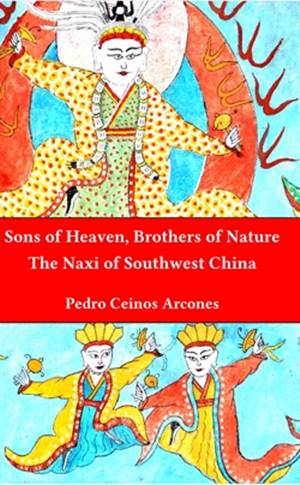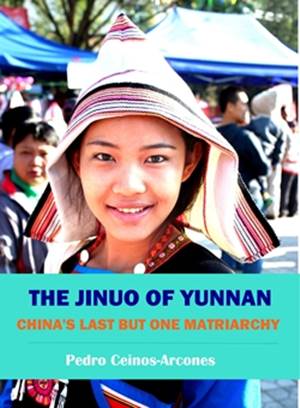Pedro Ceinos Arcones. La Magia del perro en China y el mundo. Dancing Dragons Books. 2019.
(Excerpts from the book)
The dog in China’s ancient tombs
In China, dogs buried with their owners have been discovered in archaeological sites belonging to the most important cultures. One of the oldest is that of Jiahu, in Wuyang, some 9,000 years ago, where the eleven dogs buried in their homes and cemeteries already suggest complex symbolic systems and evidence of shamanistic rituals, characterized by the custom of burying dogs in tombs and foundations of houses. A ritual that will remain alive for thousands of years, having also been discovered in the Neolithic village of Bampo, inhabited some 6,000 years ago, as well as in later settlements of the historical epoch. This indicates that the dog was used as a watchdog and that this function had acquired a magical and spiritual dimension (Underhill 2013:224, Yuan 2008).
Dogs accompanying people were found in the funerary grounds of other settlements. In tombs that gradually become more sophisticated, especially the largest that are believed to have belonged to the ruling class were included symbols that mark the belief in a new life (red marks, the color of life), perhaps in another world similar to that of the living (burials with ritual objects and others of daily use) and a route that the soul must pass (with the help of the dog).
Other ancient remains suggest that the dog was the companion of man and that he was not bred as food. The analysis of certain isotopes in their bones shows that they ate basically the same food. On the bones of deer and other animals consumed by their flesh, no incisions made by dog’s teeth have been discovered, while there are marks of teeth of rats and other carnivores. That means that dogs were not fed on human waste, but their role in the family economy was valuable enough to feed them with care. In addition, the general pattern of canine skeletons, often whole and uncut in their bones, responds more to that of the humans than to the animals consumed by their meat, usually cut up to be handled more easily. Finally, the different sizes of dogs unearthed from this long period show that different breeds of dogs adapted to different tasks were already being selected in China (Wang 2011).
The dog as a funerary element reaches great exuberance during the Shang dynasty (XVI-XI BCE), when not only were the tombs of the most powerful were furnished with a surprising amount of bronze objects, some of magnificent craftsmanship, but the number of sacrificial victims, including human victims, increased tremendously. Amid the imperial ardor that gave rise to massive sacrifices of enemies in tombs and in the consecration of public buildings, the dog continued to represent a foremost meaning. Its presence accompanying its master on the journey to the afterlife is a constant in the tombs of the Shang dynasty. Even in relatively humble burials, it is surprising to find the presence of dogs as companions. We know it is not a guardian because it is not at the door, but next to the deceased, usually just below him, looking in the same direction, sometimes with its own coffin. It is the guide and traveling companion. It is the companion of the dead par excellence.
An assessment of the inscriptions on oracular bones, the first Chinese writing, widely used during this dynasty for divinatory purposes, shows that the dog was one of the sacrifices of choice for the deities of the winds. Possibly because of its luminal position at the boundary of the worlds, its sacrifice became common in rituals related to the deities of the directions and of the rains (Eno 2010). The sacrifice of dogs was also common in the founding of cities and public buildings, as well as to worship the deities of the earth, for they appear buried. During this dynasty, there were dog breeding centers, where specimens were selected for hunting and sacrifices. Hunting had a ritual and military character for the Shang. The royal hunting expeditions showed the sovereign in his double dominion of the natural and human world, as the lord of nature and owner of the lands inhabited by men. During the hunt, the king was accompanied by many dogs kept in charge of officers stationed near the hunting grounds.
Image: China Cultural Relics
More posts on Chinese culture
Lao She Cat Country
Cat Country - Lao She Sometimes we say that a poet or a writer writes with his blood, and there are many occasions in which writers end up paying with their lives for having written a book. This is possibly one of them, and we can say that Lao She paid with his life...
The top 10 gods in 20th century Sichuan
he top 10 deities in 20th century Sichuan And we assume that there will be no major differences with the most popular ones in other parts of China, except on the coast, where the Empress of Heaven (Tianhuo), patron goddess of sailors, would be in the leading...
Notes on Chinese Medicine
Notes on the Chinese Medicine Chinese medicine is the most important non-Western medicine, and it is the only one of the medicines developed by non-Western countries that has managed, throughout history, to face the continuous achievements and advances of Western...
The world of Shanghai courtesans
The world of Shanghai courtesans The Sing-song girls of Shanghai. A novel by Han Bangqing. The action of this novel takes place, as its title indicates, in the world of the singing girls of Shanghai, of which it is also a description. The singing girls were a type of...
Diao Yinan-The Lake of the Wild Goose
Diao Yinan-The Lake of the Wild Goose In short, a film to watch and enjoy. An original plot, very well handled, moves the protagonists through degraded urban environments, in which the mastery of the artistic team manages to endow a naive beauty. The action begins at...
The Grand Canal of China
The Grand Canal of China The Grand Canal was first built during the Sui Dynasty (581-618). Its original design resembled a "Y" whose leg would point west, as it connected the rich lands of the Yangtze River delta with the capital Luoyang on one side and the capital...
More posts on China ethnic groups
The main branches of the Yao Nationality
The main branches of the Yao Nationality The Yao are extended in a wide area of Southeast Asia, as Fei Xiaotong (1), one of the first anthropologists to study them, asserts: "The Yaos characteristically lived in small, widely-scattered communities. The Yaos of Guangxi...
The Yao nationality puzzle
The Yao puzzle The Yao are one of the indigenous peoples of China remarkable for the following characters: - Big population. According to the 2000 census there were 2,600,000 Yao only in China. - Big dispersion. The Yao are dispersed for all the provinces of South...
Jinxiu Yao Autonomous County
Jinxiu Yao Autonomous County It was established in 1952 with the name of Dayaoshan (Big Mountain of the Yao) Autonomous Zone, but in 1966 the name was changed to Jinxiu Yao Autonomous County. It is a mountainous county with rugged lands and a climate hot and wet. It...
Different marriages of the Yao people
Different marriages of the Yao people Among the Yao there are different kinds of marriage, though all they have some common characteristics: - They use antiphonal songs to court each other. - They have the freedom to choose their love partners, but they not have...
The drum of the clan among the Balou Yao
The drum of the clan among the Balou Yao The Yao are one of the peoples who inhabit the mountains of southern China. They are composed of numerous branches, with languages and cultures that are quite different. One branch of the branches is known as White Pants Yao...
The religion of the Pai Yao
The religion of the Pai Yao The Pai Yao living in Liannan County believe that the world is populated by a multitude of spirits that they roughly divide into big and small spirits. According to their behavior regarding human beings, they are classified also as good or...















